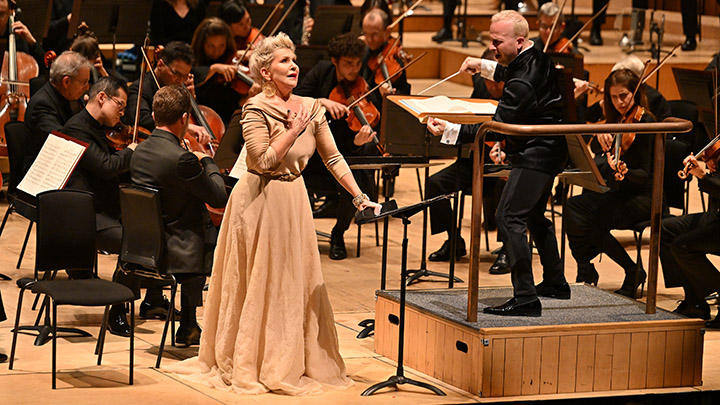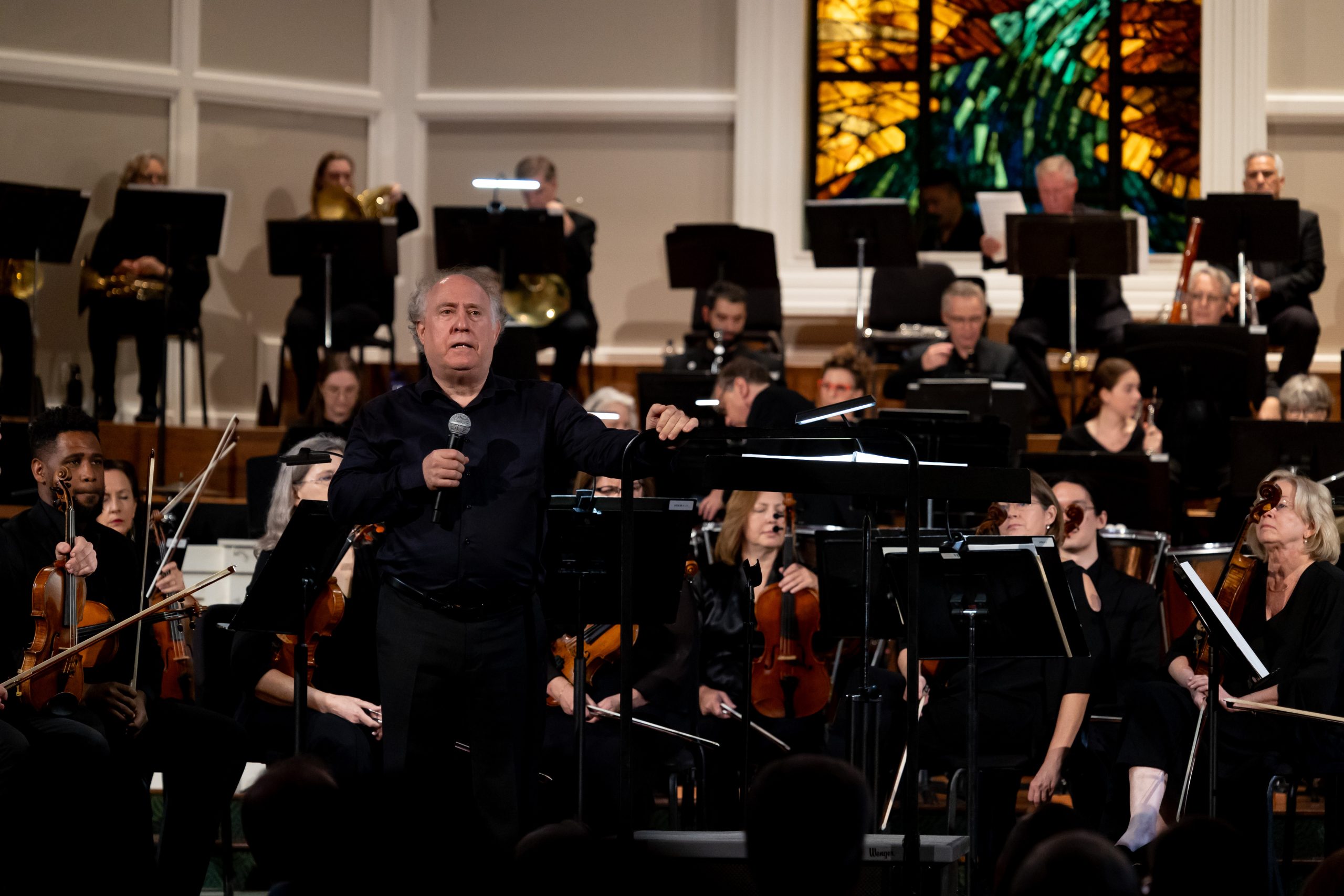‘Look at this. We are back’: the impossible return of French touch titans Cassius | Music
[ad_1]
It shouldn’t have been a surprise to see Hubert Blanc-Francard, better known as Boombass, during the Paralympics closing ceremony. It promised “an odyssey through French electronic music” and Blanc-Francard was behind some of the country’s most celebrated dance records of the last 30 years, as a key figure in the scene that became known as French touch. The surprise was that he billed himself as Cassius, which was the name of the duo he formed in 1996 with Philippe Zdar, but that he had very firmly announced was over after Zdar fell to his death from a Paris building in 2019, two days before Cassius were due to release their fifth album Dreems.
He and Zdar had been best friends for 40 years and, after Zdar’s death, Blanc-Francard said: “If you even said the name Cassius, it was like someone stuck a knife in my body. I couldn’t even listen to a note of the music.” Cassius only released five albums, because the two prioritised their friendship over their career: if things became strained, they’d take a break rather than fall out. “I had my kids, my friend and the music, the three most important things in my life,” says Blanc-Francard. “I lost my friend and I lost the music, so I fell into a big depression.”
Then, one day, he overheard their 2006 single Toop Toop playing in a Normandy supermarket and felt, “it was like Philippe saying hello to me. It was the beginning of the sun coming back.” He started dreaming about Zdar. “We were in my kitchen in Paris and he was dressed like 30 years ago – we were in the same room but never spoke. I had four or five dreams like this and then the last dream, he shook my hand. For me, it was like: ‘OK, go, my friend – do what you want to do.’ My mind needed time to be clean, to be at peace, and when he shook my hand, I was at peace. It was beautiful.”
Blanc-Francard and Zdar first met as teenagers while working as assistants in a Paris studio: they were introduced by Blanc-Francard’s father, a famed producer. Their break came with French rapper MC Solaar’s debut album: Blanc-Francard scored a handful of co-writing credits and Zdar worked on the mixing, despite the fact that both were, as Black-Francard puts it, “still learning”. Among the album’s fans was James Lavelle, who asked the pair if they could produce some tracks for his fledgling label Mo’ Wax. The result was La Funk Mob’s Tribulations Extra Sensorielles, an attempt, Blanc-Francard says, “to have the EPMD, Pete Rock [hip-hop] sound but with no voice and slow, because I was smoking like a crazy man”. The album became an early trip-hop classic.
After its release, Blanc-Francard moved to New York, erroneously convinced he could make it as a hip-hop producer. When he returned, he discovered that Zdar had made a house album under the name Motorbass, and that the underground dance scene in Paris was exploding.
A gush of incredible records suddenly started appearing from France – by Daft Punk, Air, Étienne de Crécy’s Super Discount, Dimitri from Paris and then Cassius. Their debut single Foxxy came about when Blanc-Francard played Zdar some samples he’d made from a Willie Hutch soundtrack and Zdar convinced him to speed them up to house tempo. “A few people like Laurent Garnier had opened doors,” says Blanc-Francard. “He was the first French DJ to play the Haçienda, so that said, ‘Wow, it’s possible.’ In a year, 10 or 20 projects arrived. There were new record shops in Paris with 23-year-old sellers talking about house and techno, not an old man selling you Rolling Stones records. Thomas and Guy-Man [of Daft Punk], they’re geniuses, and that helped a lot: it was the first time we could meet French guys at the level of anybody else in music. It was like we had the same capacity – not the genius, but the possibility to be in the competition.”
He says he loves the name French touch – “it’s like UK garage, it feels like you’re part of a family” – even though the disco-sampling filtered house it became shorthand for only really applied to a fraction of Cassius’s output. Their breakthrough debut album 1999 was audibly more influenced by 80s electro, while the intense, chaotic Au Rêve seems to presage maximalist the Paris dance label Ed Banger, which launched Justice and others.
Their biggest track of all, 2011’s I <3 U So, was initially commissioned by Coca-Cola, which was launching a rival to Red Bull, but it was rejected because its somnambulant mood didn’t fit with an energy drink. “We didn’t want to do the advert anyway – the drink tasted horrible. But when it came out, it was like a rebirth for us. At the time we were from the first French touch generation. Ed Banger was exploding and we were the old men from the 2000s, but we received so much love from the new generation.” It was subsequently sampled on Kanye West and Jay-Z’s Why I Love You.
Cassius had a habit of attracting big names – Madonna performed Into the Groove live as a mashup with Toop Toop, and their later albums were studded with guest appearances from Pharrell Williams, Ryan Tedder, Mike D and Cat Power among others. It’s a big legacy to continue, and Blanc-Francard says he hasn’t actually started making new Cassius music yet. He feels he needs collaborators, because that’s the way Cassius always worked. While Zdar pursued a hugely successful career as a producer – for Phoenix, Franz Ferdinand and Hot Chip – Blanc-Francard tended to work quietly at home on music. “I always needed Philippe to say, ‘We have to do music now.’ I was making music at home every day, but he was the hurry man and I was the slow man.”
Whatever happens, the Paralympics were quite a way to make a comeback – “80,000 people in the Stade de France, 8 million watching on television” – but he says his appearance was really aimed at one viewer, who wasn’t there in person. “Really, I was saying, ‘OK, Philippe, look at this: we are back.’ I still feel we are two, you know? I don’t come back into this story alone, even though I am alone: there’s a brother there. I’ve read this a lot: when you lose someone really close, that person is still inside you. And the music is still here. It will always be here.”
[ad_2]
Source link




